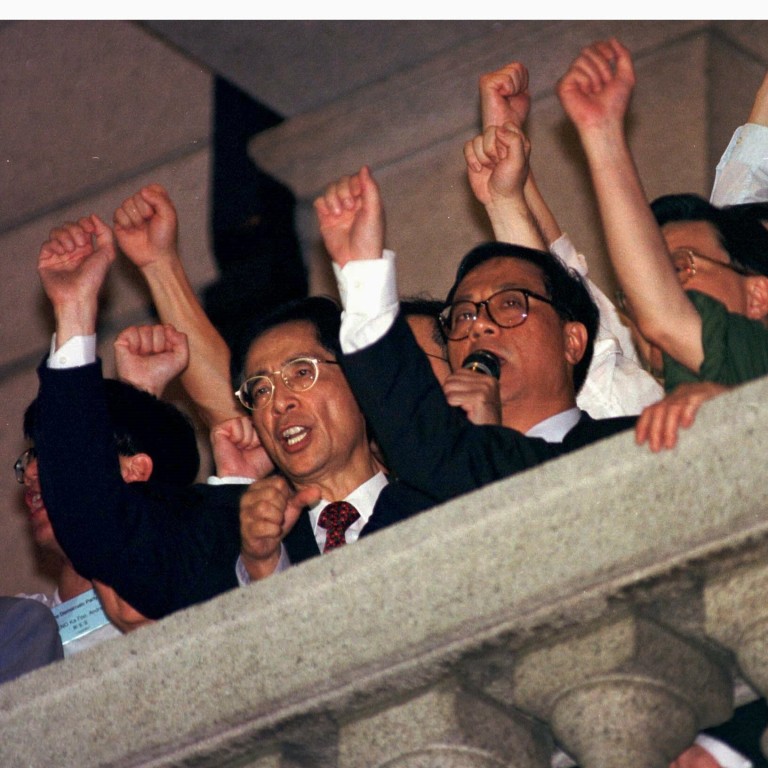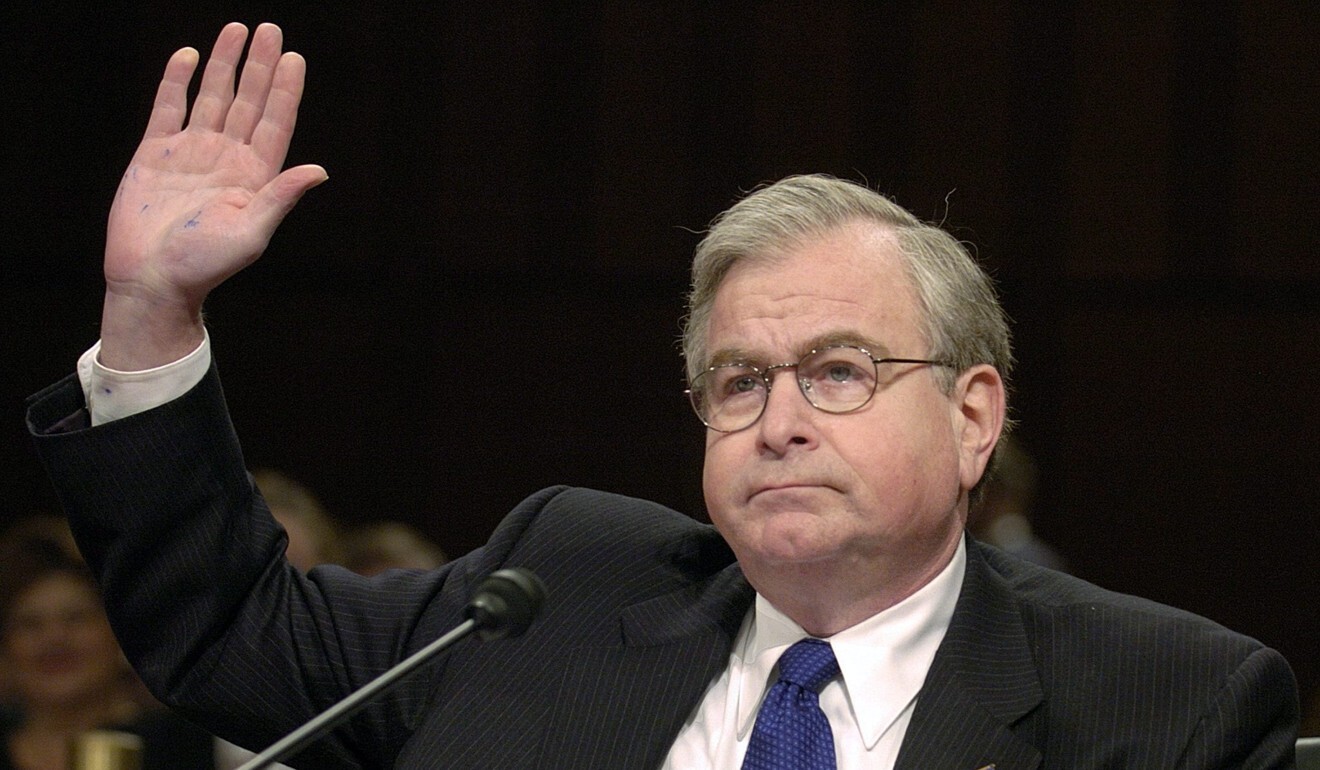
US wanted Britain to ‘restrain’ Hong Kong opposition leader Martin Lee from holding 1997 handover protest, declassified records show
- Americans were worried Beijing might react ‘disproportionately’ to big protest on historic day
- Martin Lee says he does not know what the fuss was about, as he only held peaceful protests
Days before Hong Kong returned to Chinese rule on July 1, 1997, a top United States official urged the British government to “restrain” Martin Lee Chu-ming and his fellow pan-democrats from staging protests against Beijing on the historic day, newly declassified records have revealed.
US national security adviser Sandy Berger expressed fears that a protest planned by Lee, the leader of Hong Kong’s opposition camp, might face a “disproportionate reaction” from Beijing if he went ahead.
The American said this in a discussion with John Holmes, principal private secretary to then British prime minister Tony Blair, on the sidelines of a Group of Eight (G8) summit in Denver, Colorado, held from June 20 to 22, 1997.
Lee told the Post that Berger’s remarks might have stemmed from then US president Bill Clinton’s strategy of engaging China.
The day after the G8 meeting ended, Holmes wrote to William Ehrman, principal private secretary to then British foreign secretary Robin Cook, letting him know what Berger told him.

“Berger was worried that Martin Lee and others would mount a big civil liberties demonstration against the Chinese on 1 July,” he wrote. “This could provoke a disproportionate Chinese reaction and be bad news all round.”
Holmes said he told Berger he was not aware of plans for demonstrations, but expected that Lee would certainly continue to speak his mind.
“Berger was unconvinced and hoped that we and others would use our influence to restrain Lee,” Holmes wrote.
He added that he understood that then US secretary of state Madeleine Albright had raised similar concerns with foreign secretary Cook.
“It would be interesting to know what has sparked off these US fears,” Holmes added.
Martin Lee and his colleagues did ultimately stage a protest on July 1, but it was a peaceful one.
Addressing the thousands gathered in Statue Square, the pan-democrats told the crowd: “We shall return.”
The British had planned for members of the last Legco of the colonial era to carry on as the first legislature of the new special administrative region after the handover.
However, Beijing derailed that plan by setting up a provisional legislature in 1996. It sat in Shenzhen until the handover, when it moved to Hong Kong and replaced Legco.

Commenting on the newly declassified British records, Lee, founding chairman of the Democratic Party, said he was surprised by Berger’s concern about protests he might organise.
“Our party had decided that we would only express our views about the handover in a decent manner. The handover was an important occasion and we supported the ‘one country, two systems’ formula,” he said, referring to the principle for governing Hong Kong after it returned to China.
“We had no intention of doing anything that would embarrass the Chinese and British governments on the handover day.”
Lee said he had no recollection of American or British officials asking him not to stage any protests that day.
He believed that Berger’s message to the British reflected the US administration’s desire to avoid embarrassing Beijing.

In the run-up to the handover, president Clinton had spoken several times about the importance of maintaining civil liberties in Hong Kong.
But his administration adopted an engagement strategy towards Beijing, enabling its membership of the World Trade Organization in hopes of creating a more liberal, open and friendly China.
Clinton invited then Chinese president Jiang Zemin to the US in October 1997, and made a state visit to China himself the following year.
Cheung Man-kwong, one of the pro-democracy legislators who stood alongside Lee on the Legco balcony, recalled that the city’s incoming government, led by chief executive Tung Chee-hwa, was quite cooperative in allowing their protest.
He said the pan-democrats and Michael Suen Ming-yeung, the city’s incoming secretary for policy coordination, reached a secret agreement on the lawmakers’ plan to enter the Legco building that night. Cheung recalled that Suen told them: “You have no rights, but the door is not closed.”

The group had no problem entering the Legco building for their peaceful balcony protest. The building is now home to the Court of Final Appeal.
“I don’t know why the US was worried about our plans,” Cheung said. “It seems they didn’t know us well enough. We had been staging protests in a peaceful manner for decades.”
There was another protest on the afternoon of July 1, 1997, when the Hong Kong Alliance in Support of Patriotic Democratic Movements of China organised a march calling for “building a democratic China” and hastening the establishment of democracy in the city.
It said about 3,000 people braved the rain to join its protest that July 1. Martin Lee was not among them.


